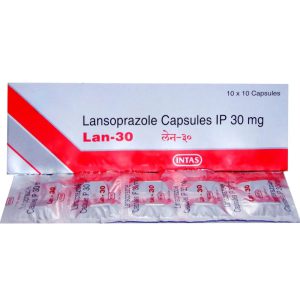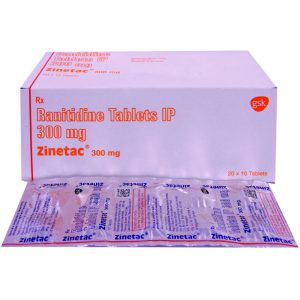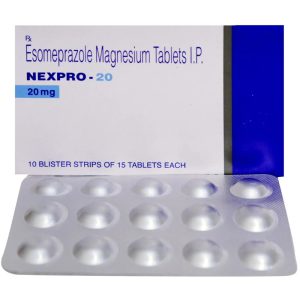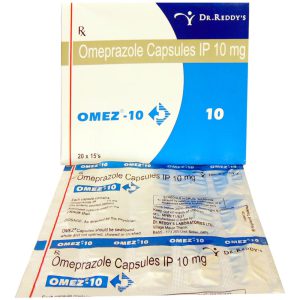Quenching Heartburns – Understanding GERD and Gastric Ulcer
GERD (GASTROESOPHAGEAL REFLUX DISEASE) – WHAT IS GERD?
Gastroesophageal reflux is a normal physiologic phenomenon experienced intermittently by most people, particularly after a meal. Gastroesophageal reflux disease (GERD) occurs when the amount of gastric juice that refluxes into the esophagus exceeds the normal limit, causing symptoms with or without associated esophageal mucosal injury.
SYMPTOMS OF GERD
Heartburn is the most common typical symptom of gastroesophageal reflux disease (GERD). Heartburn is felt as a retrosternal sensation of burning or discomfort that usually occurs after eating or when lying down or bending over. Regurgitation is an effortless return of gastric and/or esophageal contents into the pharynx. Regurgitation can induce respiratory complications if gastric contents spill into the tracheobronchial tree. Dysphagia occurs in approximately one third of patients because of a mechanical stricture or a functional problem (eg abnormal esophageal peristalsis).
GASTRIC ULCER DISEASE
Gastric ulcer disease is one of the most common diseases affecting the gastrointestinal (GI) tract. It is estimated that gastric ulcer affects 0.92% of the population or 1.6 million persons in the U.S. The male-to-female ratio is 1:1 in the United States. The incidence of gastric ulcer increases with age because of a combination of increasing NSAID use and a high prevalence of H pylori infection in persons older than 50 years.
CAUSES OF GASTRIC ULCERS
The etiologies of this condition are multifactorial and are rarely related simply to excessive acid secretion. The normal stomach maintains a balance between protective factors, such as mucus and bicarbonate secretion, and aggressive factors, such as acid secretion and pepsin. Gastric ulcers develop when aggressive factors overcome protective mechanisms. The two major etiological factors for gastric ulcers are H pylori infection and nonsteroidal anti-inflammatory drug (NSAID) consumption.
SYMPTOMS OF GASTRIC ULCER
Patients may present with a wide variety of symptoms, or they may remain completely asymptomatic. Classic gastric ulcer pain is described as pain occurring shortly after meals (the classic heartburn), for which antacids provide minimal relief. Duodenal ulcer pain often occurs hours after meals and at night. Pain is characteristically relieved with food or antacids. Patients with bleeding gastric ulcers may give a history of hematemesis (vomiting blood) or melena (bloody stools).
DIAGNOSING GASTRIC ULCER
Routine laboratory tests, such as complete blood cell count and iron studies, can help detect anemia. Anemia and weight loss are alarm signals and mandate early endoscopy to rule out other sources of chronic GI blood loss.
UPPER G I ENDOSCOPY:
This entails visualization of the esophagus, the stomach and the duodenum, in other words the Upper Gastro Intestinal Tract. Not only are ulcers seen but brush biopsies from ulcers and other suspicious areas are easily taken making this test the diagnostic modality of choice in the early detection of gastric cancer.
OTHER IMAGING STUDIES:
Include a double contrast barium study and a plain erect x ray of the abdomen notes gas under the diaphragm domes, suggestive of a perforated ulcer.
TESTS FOR GERD
In addition to Esophagogastrodeodenoscopy (UPPER GI Endoscopy) and Contrast Barium studies highlighted in the investigations of gastric ulcer above, certain specialized tests to confirm GERD are available. These include Esophageal manometry, Ambulatory 24-hour pH monitoring (Patients with endoscopically confirmed esophagitis do not need pH monitoring to establish a diagnosis of gastroesophageal reflux disease (GERD) and Radionuclide measurement of gastric emptying.
TREATMENT OF GERD AND GASTRIC ULCER
GERD
LIFESTYLE MEASURES
Treatment of gastroesophageal reflux disease (GERD) is a stepwise approach. The goals are to control symptoms, to heal esophagitis, and to prevent recurrent esophagitis or other complications. The treatment is based on lifestyle modification and control of gastric acid secretion. Lifestyle modifications include the following: Losing weight (if overweight), Avoiding alcohol, chocolate, citrus juice, and tomato-based products, Avoiding large meals, Waiting 3 hours after a meal before lying down, Elevating the head of the bed 8 inches.
GASTRIC ULCER
The medical treatment of gastric ulcers is aimed at restoring the balance between aggressive factors (acid secretion) and mucosal protective factors. In patients infected with H pylori, the most effective treatment is therapy to eradicate the organism and to suppress acid secretion. Patients taking NSAIDs should discontinue them if possible.
DRUG THERAPY FOR GASTRIC ULCER AND GERD
PROTON PUMP INHIBITORS
GASTRIC ULCER:
These drugs irreversibly inhibit the H+/K+ adenosine triphosphatase (ATPase) pump, effectively inhibiting acid release. The drugs belonging to the PPI class include Omeprazole (Prilosec, Omez), Lansoprazole (Prevacid, Lan Capsules), Rabeprazole (Aciphex), Pantoprazole (Protonix), and Esomeprazole (Nexium, Nexpro) given in daily or twice-daily doses for 4 weeks heal 80-100% of gastric ulcers if H pylori infection is not present or has been eradicated.
GERD:
PPIs are the most powerful medications available for treating this condition. These agents should be used only when gastroesophageal reflux disease (GERD) has been objectively documented.
WHAT IS NEXPRO?:
It is the S-isomer of omeprazole or esomeprazole. NEXIUM is the latest congener of this group and possibly the safest with equal efficacy.
HOW DOES NEXPRO WORK?:
It inhibits gastric acid secretion by inhibiting H+/K+ -ATPase pump at secretory surface of gastric parietal cells.
DOSE OF NEXPRO:
– 40 mg a day on an empty stomach is usually recommended in mild to moderate cases. Twice daily dosage is used in severe cases.
SIDE EFFECTS OF NEXPRO:
Other than drug related hypersensitivity no other adverse reactions have been documented. The drug may not be safe for use in pregnant patients and the relief it produces may mask the symptoms of Gastric Cancer.
LIQUID FORMULATION:
Zegrid is an oral suspension of Esomeprazole, which appears to be rapid acting with prolonged efficacy.
HISTAMINE H2 ANTAGONISTS
These drugs inhibit histamine stimulation of H2 receptor in gastric parietal cells. Ranitidine (Zantac) is a time tested and most popular drug. However studies indicate PPI’S (NEXIUM) have significantly decreased cumulative frequencies of spurting lesions and gastric ulcers.
MUCOSAL PROTECTANTS
Mucosal protectants, such as bismuth and sucralfate, can also be effective in healing gastric ulcers; however, they are not as effective as PPI’S (Nexpro) and H2 blockers ( Zantac). Bismuth subsalicylate (Pepto-Bismol) is a good example.
H PYLORI ERADICATION
Multiple regimens have been evaluated for the eradication of H pylori infection; however, triple therapy has consistently been shown to eradicate the organism more than 90% of the time. The 5 different regimens approved by American College of Gastroenterology are as follows (all 5 regimens are given for a total of 2 wks)
Bismuth, Metronidazole, and Tetracycline with H2 blockers
Bismuth, Metronidazole, and Tetracycline with a PPI (Nexpro)
Prevacid, Amoxicillin and Clarithromycin (PREVPAC)
Prilosec, Metronidazole ( FLAGYL), and clarithromycin
Ranitidine, Bismuth, and Clarithromycin (BIAXIN) with Amoxicillin (AMOXIL), Metronidazole, or tetracycline
ENDOSCOPIC THERAPY FOR GASTRIC ULCER
Several modalities of endotherapy are available, such as injection therapy, coagulation therapy, hemostatic clips, argon plasma coagulator, and combination therapy. Injection therapy is performed with epinephrine in a 1:10,000 dilution or with absolute alcohol. Thermal endotherapy is performed with a heater probe, bipolar circumactive probe, or gold probe.
SURGICAL THERAPY
GASTRIC ULCER
Surgical therapy relies on acid reduction with vagotomy. Although vagotomy may be unnecessary, truncal or selective vagotomy is performed routinely. Indications for surgical intervention include life-threatening hemorrhage that cannot be controlled with medical management alone, ulcer perforation, gastric outlet obstruction and giant gastric ulcer. Distal gastrectomy with Billroth I (gastroduodenostomy) or Billroth II (gastrojejunostomy) is the preferred procedure for these complications.
GERD
Laparoscopic fundoplication is the preferred surgical treatment for GERD. Laparoscopic fundoplication is performed under general endotracheal anesthesia. Five small (5- to 10-mm) incisions are used. The fundus of the stomach is wrapped around the esophagus to create a new valve at the level of the gastroesophageal junction.
CONCLUSION – Understanding GERD and Gastric Ulcer
In enlisting the causes for both GERD and gastric ulcer disease, medical literature often overlooks the role of stress played in the genesis of such ulcers. Albeit the focus is currently on either H Pylori or NSAIDS induced gastritis, one cannot help but point out that our current ‘rat – race’, fast paced, junk food eating population has no time to relax. Therefore Esomeprazole (Nexpro Tablets 20 mg and 40 mg) may soon overtake over- the -counter sales of even multivitamin preparations as long as stress related GERD and Gastric Ulcer rule our times.



